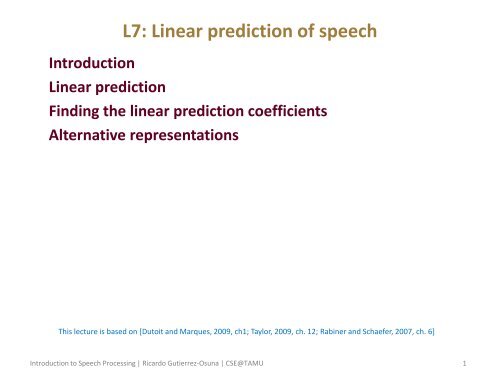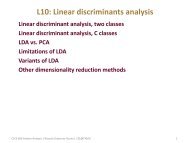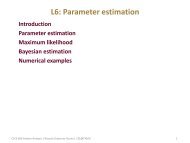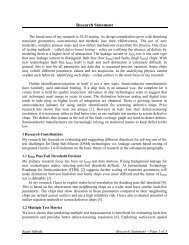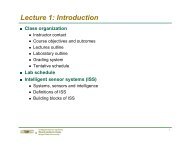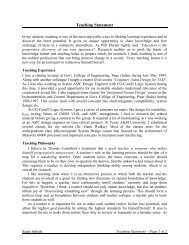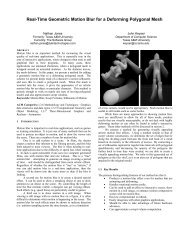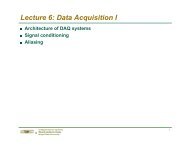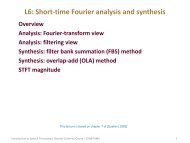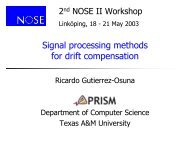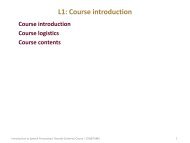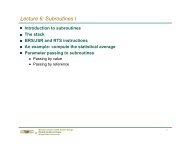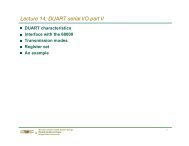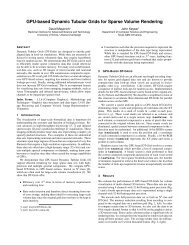L7: Linear prediction of speech
L7: Linear prediction of speech
L7: Linear prediction of speech
Create successful ePaper yourself
Turn your PDF publications into a flip-book with our unique Google optimized e-Paper software.
• Introduction<br />
• <strong>Linear</strong> <strong>prediction</strong><br />
<strong>L7</strong>: <strong>Linear</strong> <strong>prediction</strong> <strong>of</strong> <strong>speech</strong><br />
• Finding the linear <strong>prediction</strong> coefficients<br />
• Alternative representations<br />
This lecture is based on [Dutoit and Marques, 2009, ch1; Taylor, 2009, ch. 12; Rabiner and Schaefer, 2007, ch. 6]<br />
Introduction to Speech Processing | Ricardo Gutierrez-Osuna | CSE@TAMU 1
– On a spectral plot for a <strong>speech</strong> frame<br />
• Pitch appears as narrow peaks for fundamental and harmonics<br />
• Formants appear as wide peaks in the spectral envelope<br />
[Dutoit and Marques, 2009]<br />
Introduction to Speech Processing | Ricardo Gutierrez-Osuna | CSE@TAMU 3
[Dutoit and Marques, 2009]<br />
Introduction to Speech Processing | Ricardo Gutierrez-Osuna | CSE@TAMU 5
[Rabiner and Schafer, 2007]<br />
Introduction to Speech Processing | Ricardo Gutierrez-Osuna | CSE@TAMU 16
http://www.phys.unsw.edu.au/jw/graphics/voice3.gif<br />
Introduction to Speech Processing | Ricardo Gutierrez-Osuna | CSE@TAMU 17
• Examples<br />
ex7p1.m<br />
Computing linear predictive coefficients<br />
Estimating spectral envelope as a function<br />
<strong>of</strong> the number <strong>of</strong> LPC coefficients<br />
Inverse filtering with LPC filters<br />
Speech synthesis with simple excitation<br />
models (white noise and pulse trains)<br />
ex7p2.m<br />
Repeat the above at the sentence level<br />
Introduction to Speech Processing | Ricardo Gutierrez-Osuna | CSE@TAMU 18
• Root pairs<br />
– The polynomial can be factored into complex pairs, each <strong>of</strong> which<br />
represents a resonance in the model<br />
• These roots (poles <strong>of</strong> the LP transfer function) are relatively stable and are<br />
numerically well behaved<br />
– The example in the next slide shows the roots (marked with a ) <strong>of</strong> a<br />
12-th order model<br />
• Eight <strong>of</strong> the roots (4 pairs) are close to the unit circle, which indicates<br />
they model formant frequencies<br />
• The remaining four roots lie well within the unit circle, which means<br />
they only provide for the overall spectral shaping due to glottal and<br />
radiation influences<br />
Introduction to Speech Processing | Ricardo Gutierrez-Osuna | CSE@TAMU 20
[Rabiner and Schafer, 2007]<br />
[McLoughlin and Chance, 1997]<br />
Introduction to Speech Processing | Ricardo Gutierrez-Osuna | CSE@TAMU 21


